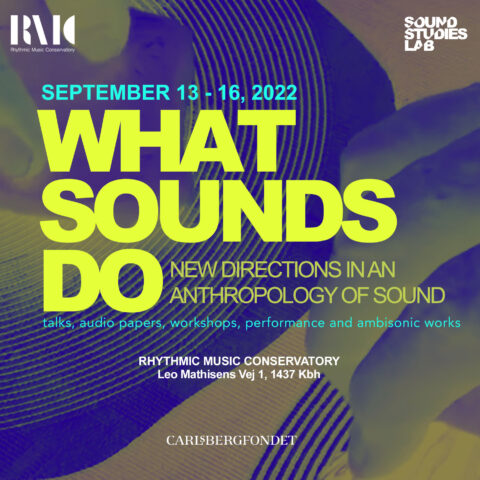
[infinite grain is a series of interviews inspired on microsound procedures, exploring a wide variety of topics in dialogue with artists who work with sound on installation, composition and improvisation]
Gintas Kraptavicius is an artist from Lithuania. Over the years, he has explored different disciplines and ways of making and showcasing art, including performances, happenings and different projects around music.
In sound and music, his career is one of a kind, featuring a wide spectrum of fields and explorations, mainly in the topics of electronic music and experimental sound practices, in which an aesthetic pursuit is capital, specially when it comes to the detention into computer sound perspectives where synthesis processes, field recordings, voice recording and transformation converges to deliver a singular, often granular experience.
Gintas‘ take on microsound is over all unique and always fresh, exploring all kinds of territories, where a fine mix of modulations, microtones, grains, frequencies and noises is always present. His eclectic vision frees sound itself, letting it to transcend into new territories beyond conceptual or abstract spheres, usually resulting in a profound perceptive experience.
Gintas, thanks for accepting this interview. What are you listening in this moment?
You are welcome, Miguel.
I am trying to listen to all new stuff all the time, picking music by artist names or labels. I am still curious. In the same as many people, I’m looking for and listening stuff from let’s say to all ‘hipsters’ labels known in our circle. But just sometimes I’m hearing something interesting from them, mostly I found the same names for decades and stuff that’s fashionable at the moment. It is a bit strange but in current electronic / electro acoustic / experimental music scene I see strong fashionable streams. Fashions changing from time to time as in pop music. So… Nevertheless sometimes I can found true music treasures in all that mess and it is worth to search for.
What led you to explore sound and what do you find on it?
Curiosity, pleasure, fun; aesthetical, intellectual experiences, and all life researches led me to that terra incognita sound land. But later appeared this terra wasn’t incognita… But I am still curious for that.
I find fascinating the way your work with granular aesthetics. You create such exotic granular landscapes, sometimes simple and sometimes pretty complex. I wonder why do you find special in granulation and microsound techniques and how this approach affects the way you relate and work with sound.
More than 10 years ago I began to listen to granular sound aesthetic with a big fascination, and naturally I began to work on it. Sometimes it seems for me that I’ve found some interesting sounds, spaces, unknown niches or a new way of how to play/control all the sounds in a live situation; and I start to explore them unmercifully, but later it starts boring me and again I look for something fresh. It’s endless, that’s why all my albums are so different.
I do not have something like “default” sound beginning. Usually I am looking to a computer program I playing with, “like a goat to the new gate” don’t knowing what to begin with. Although many known artists work for decades in only one “found them” way and it is ok for them, it seems that is not for me. I can’t work for 10 or more years in one way nevertheless how good it is, but it is uninspiring for me until then.
As for term ’microsound’ I don’t know what exactly it means now. And I am not sure if I anytime played it.
What do you think about the importance of repetition in your works? They often get into hypnotic places where sound relationships become different and diverse, despite of being repeated constantly.
In recent time I’m not using repetition in my works. The last album I released which was based on repetition are “works 2006-2008”. Repetitions as you know are connected with universe, sex, minimalism and so on. All that fits into the rhythm conception. And aiming to the repetition maybe is to transfer you to the different dimension that you began to scream from ecstasy or fall in hypnosis or whatever. Sometimes it happens. Music is a very unpredictable thing.
Along with repetition I also find there a very interesting perspective towards grain density, evident in that entropic and chaotic way you sometimes have for organizing grains and objects. I wonder what’s your take on this way of massively/random merging and manipulating microsounds.
Hmm, maybe it’s all about music. Music is organization of sounds, so maybe it’s the same kind… Honestly to say, I don’t know how it’s happening, I go where sound leads me. At first I follow sound; then when I have it, maybe my brain begins to work looking for some kind of form. Sometimes from the beginning I am imagining what I am looking for. But terrible hard to say how it all happens… one thing I know is that I must practice all the time (of course until the reasonable limit), then music can appear if I will be prepared for her.
I’m also curious about the process you do with grains in the computer. How much of randomness is applied during the compositional process and how micro-montage practices are present in there? Do you have any favorite processing tools for that?
It depends. Randomness is always there. Sometimes less, sometimes more. If I’m working for an album (or whatever) then I’d be playing/improvising live, then selecting more successful pieces and then mastering them, slightly correcting them if it’s needed. Correcting tool for me usually is Sound Forge with a bunch of directX plugins. Almost all pieces on all my albums are pieces that are played live.
How is the balance you maintain between synthetically generated sounds and those you capture by using methods such as field recording? How’s your approach towards that combination of sources? Any preference?
I’m using only synthetically generated digital sounds, no samples. When sometimes reviewers of my albums talk about captured samples I using in my music, they are simply wrong. Yes sometimes I using field recordings but then it go as field recordings, not as samples. Convergence of these two methods (field recordings and synthesized sounds) was used in one album, “lovely banalities”.

Gintas K & Paulo Raposo at festival Garso Galerija in Vilnius 2010
Do you have an ideal way for listening? And specifically talking about your pieces, how do you think is the proper or best way to listen to them?
To listen with a proper sound system, I think it is the best way to listen to my music. Stereo, it sounds strange but now sometimes at gigs, organizers give a DJ sound system for playing, with a one low speaker as a subwoofer. So it neither doesn’t fit nor for my performances nor for my music– I need a proper stereo system as for high as for low frequencies.
I wonder how’s your approach on performance and how the live situation relates with your studio/compositional work.
Mostly now I use the computer, Plogue Bidule software with a bunch VST plugins mostly created by Cycling’74 & midi keyboard/controller assigned to the plugins. On live sets/performances I am much working at home. Creating it, polishing it, until it becomes a prepared set with some kind of unexpectedness, new sounds, unsafeness, because I can’t fully control granulated sounds. Besides that in a live situation I think you become like a mediator of the power, energy, magic that you transferring to the public. And the public feel it (or not), not only hear or see you. That’s the difference between a presentation of a piece at concert, ‘semi-live’ playing and a fully live played performance when you control (or trying to control) everything and energize the situation.
Do you have any particular interests with your sound work? Is there any kind of effect you want to cause in the consciousness of those who experience your art?
Now has been made some interesting scientific researches with some success on how music affects consciousness, brains. It looks that a good (good or bad music are very individual thing, depends on your taste, backgrounds and so on) music affects human brain like some kind of drugs invoking a big level pleasure. So, for my music at first I want myself to feel strong emotions: fun, pleasure, melancholy, energy, pain, tears; intellectual, aesthetical fun or other mind states and then I hope listeners will feel the same things. But in general I don’t have any particular interests in my sound works, something like a mission or whatever. I simply want to create good music. It is my main aim… until creation becomes like a drug addiction for me. Then I must do a pause or it will be stopping me to live.
Finally, could you tell me about your notion of silence and how is it related to your conception and approach of noise?
There are many speculations about conceptions of silence or noise, but for me it is just parts of music. Mainly I do not have any conception about my music or at least I do not have such intentions for my sounds with rare exceptions. For me music is made from blood, meat and sweat. And rephrasing Pythagoras: “with some heavens beams on it”.
Interview conducted by Miguel Isaza. June 30, 2014.





